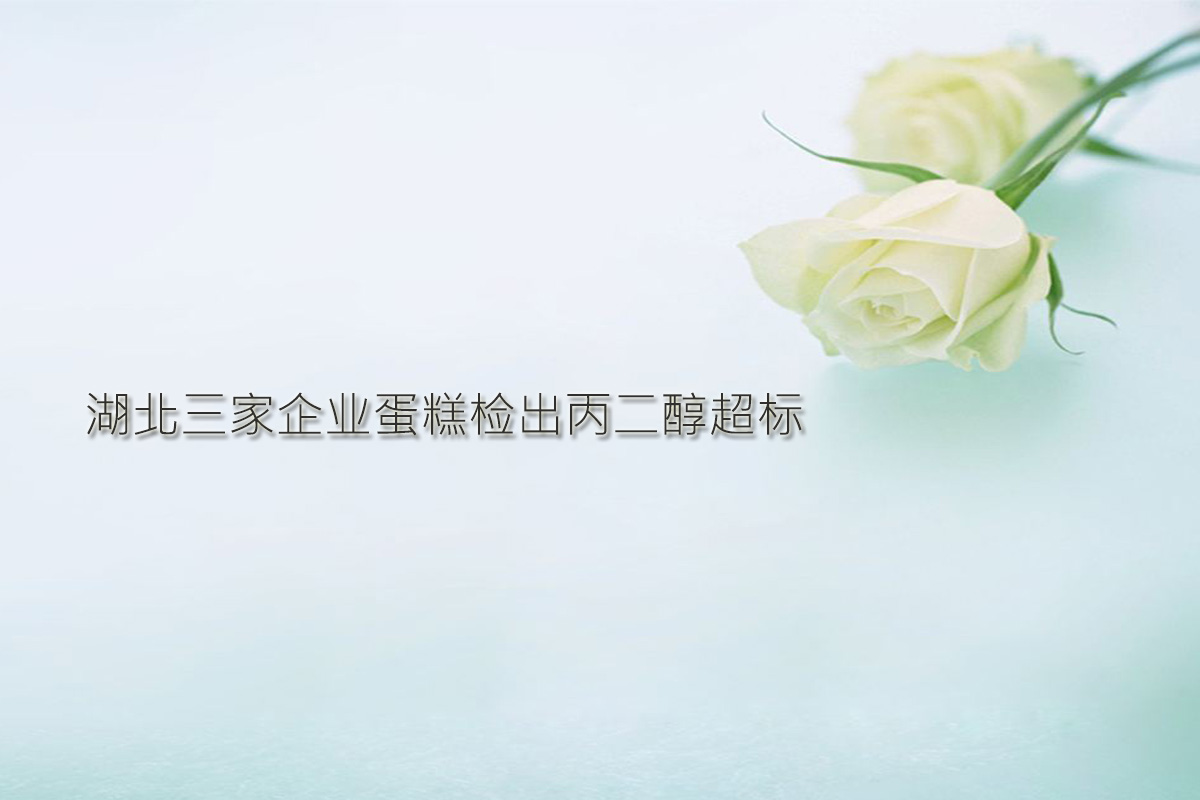
Propylene glycol was detected in cakes from three enterprises in Hubei:
On May 9, the Hubei Provincial Administration for Market Regulation announced the 17th Food Safety Supervision and Random Inspection Information. The Bureau organized random inspections of 72 batches of samples from four categories of food, including biscuits, alcoholic beverages, cakes, and edible agricultural products. , 3 batches of cakes were found to contain propylene glycol exceeding the standard.
The notice shows that the unqualified samples are: Haizhizhi Piano Cake sold by Jingshan Xinhe Oufa Trading Co., Ltd. and produced by Wuhan Haizhizhi Food Co., Ltd. (production date/batch number: 2019-2 -20), Yuanman small cake (production date/batch number: 2019-2-22); nominal matcha steamed cake produced by Hubei Gangrong Food Co., Ltd. sold by Zhongbai Warehouse Supermarket Co., Ltd. Jingshan Union Square Store (production date/batch number) : 2019-2-18), the detection values of propylene glycol in the three batches of samples were 3.35g/kg, 3.35g/kg, and 4.81g/kg respectively.
According to the “GB2760-2014 Standards for the Use of Food Additives”, propylene glycol can be used as a stabilizer and coagulant, anti-caking agent, defoaming agent, emulsifier, moisture retaining agent, thickening agent, etc. in food. , the maximum usage amount in pastries should not exceed 3.0g/kg.
For unqualified products found during random inspections, the Hubei Provincial Market Supervision and Administration Bureau has required the market supervision departments of Wuhan, Xiaogan, and Jingmen cities to urge producers and operators to immediately comply with the provisions of the Food Safety Law of the People’s Republic of China. Seal, remove and recall substandard products, further investigate and deal with the producers and operators of substandard products, identify the batches, quantities and reasons for producing substandard products, and formulate corrective measures.
Propylene glycol introduction:
Propylene glycol is an organic compound (diol), usually slightly Sweet, odorless, colorless and transparent oily liquid, hygroscopic and easily mixed with water, acetone, and chloroform. It is widely used in the food, pharmaceutical and cosmetic industries.
In the application of food-grade propylene glycol, in flavors, fragrances, and baked pastries, propylene glycol is an extremely excellent raw material and has an irreplaceable position in the production of many products.
In the food industry, propylene glycol reacts with fatty acids to form propylene glycol fatty acid esters, which are mainly used as food emulsifiers; propylene glycol is an excellent solvent for condiments and pigments. It can be used as a solvent to dissolve food additives that are insoluble in water, such as preservatives, pigments, and antioxidants, and then add them to food. It has strong hygroscopicity and has moisturizing and anti-freezing effects on food.
According to the relevant provisions in the “GB2760-2014 National Food Safety Standard Food Additive Usage Standard”, the functions of propylene glycol are stabilizers and coagulants, anti-caking agents, defoaming agents, emulsifiers, and moisture retaining agents. , thickening agent, the maximum usage amount in wet and raw noodle products (such as noodles, dumpling wrappers, wonton wrappers, siomai wrappers) is 1.5g/kg, and the maximum usage requirement in pastry production is 3.0g/kg.
Reminder: In addition, food-grade propylene glycol requires manufacturers to have a food additive (propylene glycol) production license. Imported food-grade propylene glycol requires suppliers to provide inspection and quarantine certificates for the corresponding batches of propylene glycol.

 微信扫一扫打赏
微信扫一扫打赏

